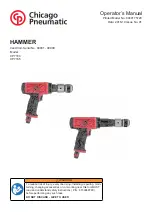
- App.37 -
Appendixes
P r N o .
P a r a m e t e r Range
F u n c t i o n
d e s c r i p t i o n
Install an external regenerative discharge resistor (between P (5-
p i n ) a n d B 2 ( 3 - p i n ) o n t h e r e l e v a n t c o n n e c t o r ) , a n d s e t t h i s
parameter as necessary.
6 C
E x t e r n a l
r e g e n e r a t i v e
d i s c h a r g e
r e s i s t o r
s e l e c t i o n
0 ~ 3
Regenerative discharge resistor
External regenerative
discharge resistor
D V O P 2 8 9 0
D V O P 2 8 9 0
External resistor
External resistor
Not used.
Over-regenerative power protection
R e g e n e r a t i v e d i s c h a r g e r e s i s t o r o v e r l o a d
protection works depending on the capacity
of the optional external regenerative discharge
resistor.
The protection operates for the external resistor
whose operating limit is 10% of the duty.
The protection is activated as operating limit of
the external resistor and as 100% duty.
R e g e n e r a t i o n p r o c e s s i n g c i r c u i t i s n o t
operated.
<Notes>
Don't fail to install external protection such as thermal fuse.
Otherwise, regenerative discharge resistor is not protected any more
to cause possible abnormal heat generation, resulting in burning of
the motor.
Value
0
1
2
[ 3 ]
< N o t e s >
For safety, a thermal fuse is built in the optional external regenerative dis-
charge resistor. Wiring to the internal thermal fuse may break depending on
the applicable heat radiating conditions, operating temperature range, sup-
ply voltage and load fluctuation.
Be sure to assemble the amplifier with the machine and check the operating
limit so that the surface temperature of the regenerative discharge resistor
may be 100Åé or lower on poor conditions likely to cause generation of re-
generative discharge resistance conditions (such as high supply voltage,
large load inertia and short deceleration time).
















































